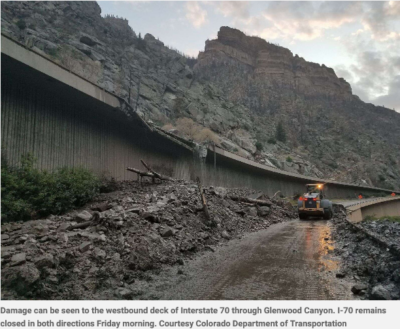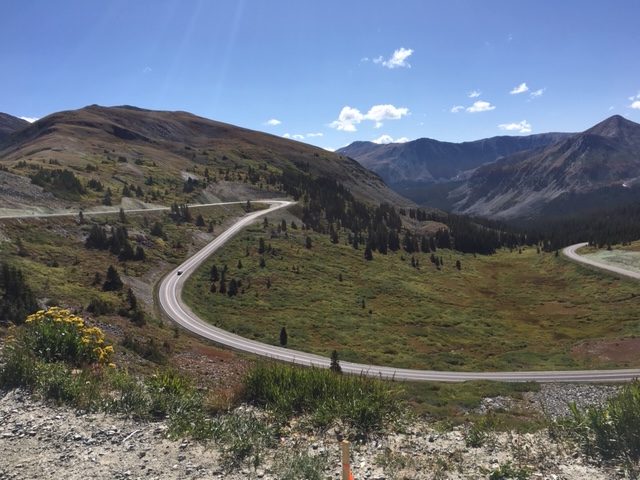It’s going to be an interesting couple of summers, for travel between the Western Slope and the rest of Colorado, as the Colorado Department of Transportation (CDOT) plans major reconstruction work on Interstate 70 through Glenwood Canyon. Earlier this week, CDOT put forward an idea to detour summer traffic around Glenwood Canyon. There is a northern route and a southern route; that would take it over Cottonwood Pass through Eagle, Garfield, and Gunnison counties into and through Chaffee County.
In case any of us were wondering just how important this is, we clarify: the Interstate highway system is regulated at the federal level. Doing any work of the magnitude necessary to fully repair the freeway in Glenwood Canyon after the devastation caused by both wildfire and massive mudslides in the past two years is — well — a really big deal.
A bill introduced to the U.S. House of Representatives on April 14, called the I-70 Detour Act, would require the U.S. Secretary of Transportation Pete Buttigieg to study potential Glenwood Canyon alternatives “necessary to offset extended closures associated with Interstate Route 70.”
As the bill points out at the very first words: “Interstate Route 70 is the gateway to the Rocky Mountains and a major east-west interstate highway that runs through and connects 10 different states from Baltimore, Maryland, to Cove Fort, Utah.”
It adds that alternative routes should be funded so people can detour around I-70 safely and “to ensure the continuation of commerce.”

I-70 through Glenwood Canyon. Photo courtesy of Post Independent
Just how important commerce is was spelled out in the bill: “Closures of Interstate Route 70 are extremely costly, with an economic impact estimated at $1 million per hour.”
So every day that I-70 has been closed has cost $24 million in economic impact. Given how many times I-70 had to be closed just last year, and some closures extending two weeks or more, the impact is obvious.
While CR 306 at Cottonwood Pass (elevation 12,126 feet) linking Chaffee and Gunnison Counties (where it become CR 209) got a major rebuild only two years ago, the rest of the road to the west includes other not-so-safe aspects.
The ‘other” pass also called Cottonwood Pass runs through Carbondale and Redstone can be hair-raising. In Garfield and Eagle counties, the two-lane road has sections that narrow to one lane without adequate road shoulders and some sections are dirt roads. There are sharp curves that make it difficult for semi-trucks to traverse.
CR 133 through Somerset to 135 through Crested Butte and Almont becomes Chaffee CR 306. The northern detour route on U.S. 40 through Craig has slide areas.
If passed, the bill would allow up to two years for the Secretary of Transportation to submit a recommendation “for significant improvements and potential alternatives necessary to offset extended closures associated with Interstate-70”. Both Garfield and Eagle County have submitted ideas for the improvements they would need to make secondary roads usable for the volume of traffic.
CDOT’s Chief Engineer Steve Harelson appeared to shoot down the idea of using Cottonwood Pass (at least this season) almost immediately. “The road will likely continue to be a county road and will not be able to support heavy commercial traffic,” said Harelson. “We know there’s also a great deal of interest in the future of Cottonwood Pass … Our team is working with Eagle and Garfield counties to explore limited improvements within the budget.”
What exactly he meant by “We know there’s also a great deal of interest in the future of Cottonwood Pass,” isn’t yet clear.
Cottonwood Pass is typically open only from late May (with road crews attempting to open it by Memorial Day) to October due to the snow amounts at higher elevations. While Trail Ridge Road reaches 37 feet higher, Cottonwood Pass itself is more than 1,300 feet higher at the Continental Divide than is Trail Ridge Road, making it the highest paved pass in the United States.
Featured image: The view looking east on Cottonwood Pass in Sept. 2019, the official reopening of the pass after major improvements were done. Photo by Jan Wondra.








Recent Comments